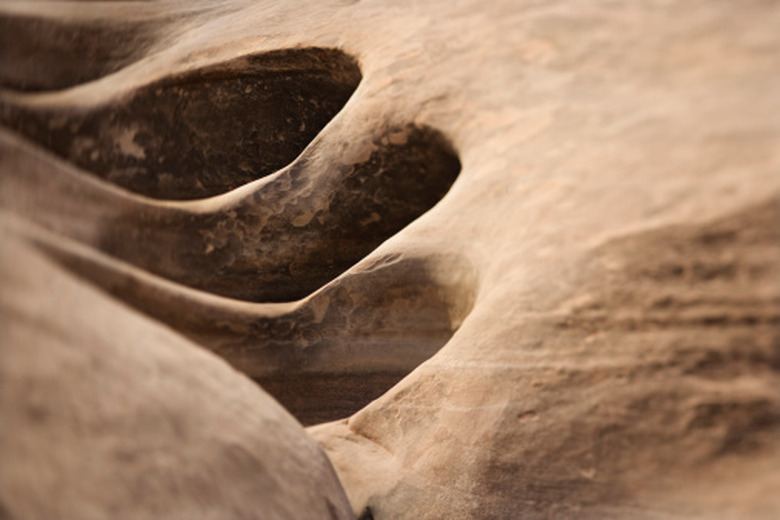How To Dissolve Silicate
Silicates are some of the most common minerals on earth. According to Georgia Southwestern State University, silicates comprise roughly 74 percent of the minerals in the Earth's crust. Silicon is second only to oxygen as the most abundant element in the crust. Silicon combines with other elements, such as calcium, iron, potassium and magnesium to form a wide range of silicate material. Natural acids form when rain combines with elements in the atmosphere. These acids dissolve silicates over time. In the lab, scientists use man-made copies of natural acids such as salicylic acid.
Step 1
Place aspirin tablets on the scale. Add tablets until you have 10 grams of aspirin. Depending on the size of your tablet, this amount will be between 2 and 4 tablets. Use pure aspirin. Do not use the buffered tablets.
Step 2
Crush the tablets between two spoons until the material is a fine powder.
Step 3
Measure 500 ml of the de-ionized water and pour it into the plastic container.
Step 4
Pour the powdered aspirin into the container with the water. Put the lid on the container. Gently shake the container to dissolve the powder.
Step 5
Open the container and pour the sand into the acid mixture. Observe the sand for 24 hours. The sand will dissolve, adding the composite minerals to the water and neutralizing the acid.
Things Needed
- Aspirin tablets
- Lab scale
- 2 spoons
- 500 ml de-ionized water
- Plastic container with lid
- 1 tsp. quartz sand
TL;DR (Too Long; Didn't Read)
To explore how acids dissolve silicates in another way, use a small fountain pump to recirculate the salicylic acid. Place a small hose over one portion of a quartz rock. Watch as the acid dissolves a channel in the quartz.
Warning
Use caution when working with salicylic acid. keep the acid off your skin and away from your eyes.
References
- Georgia Southwestern State University: Mineral Lecture,T. Weiland
- University of Missouri: Dissolution of Rock-Forming Silicate Minerals in Organic Acids: Simulated First-Stage Weathering of Fresh Mineral Surfaces: W. H. Huang and W. D. Keller
- Indiana University: Minerals, Rocks & Rock Forming Processes
Cite This Article
MLA
Braeuner, Shellie. "How To Dissolve Silicate" sciencing.com, https://www.sciencing.com/dissolve-silicate-8547322/. 24 April 2017.
APA
Braeuner, Shellie. (2017, April 24). How To Dissolve Silicate. sciencing.com. Retrieved from https://www.sciencing.com/dissolve-silicate-8547322/
Chicago
Braeuner, Shellie. How To Dissolve Silicate last modified March 24, 2022. https://www.sciencing.com/dissolve-silicate-8547322/
